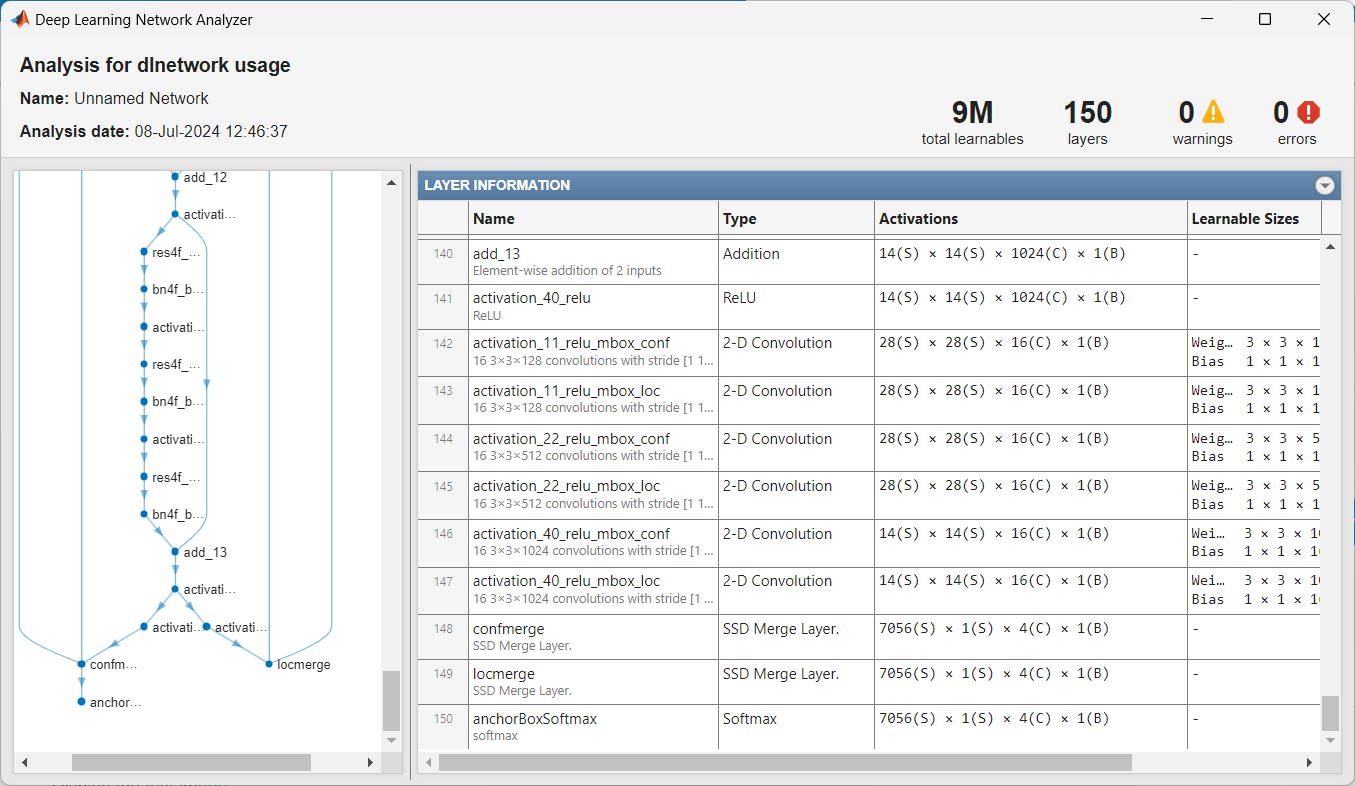ssdObjectDetector
Detect objects using SSD deep learning detector
Description
The ssdObjectDetector detects objects from an image, using a single
shot detector (SSD) object detector. To detect objects in an image, pass the trained detector
to the detect function.
You can also use the trained detector for multiclass object detection. For information about
SSD object detection, see Getting Started with SSD Multibox Detection.
Creation
Syntax
Description
detector = ssdObjectDetector(net,classes,aboxes)net.
If net is a pretrained SSD deep learning network, the function
creates a pretrained SSD object detector. The classes and
aboxes are the classes and anchor boxes used when the network was
trained.
If net is an untrained SSD deep learning network, the function
creates a SSD object detector to use for training and inference.
classes and aboxes specify the object classes
and the anchor boxes, respectively, for training the SSD network. Use the trainSSDObjectDetector function to train the network before performing
object detection.
detector = ssdObjectDetector(baseNet,classes,aboxes,DetectionNetworkSource=layer)baseNet.
If baseNet is a pretrained deep learning network, then the
function creates a SSD object detector and configures it to perform transfer learning with
the specified object classes and anchor boxes.
If baseNet is an untrained deep learning network, then the
function creates a SSD object detector and configures it for object detection.
classes and aboxes specify the object classes
and the anchor boxes, respectively, for training the SSD network.
You must train the detector on a training dataset before performing object detection.
Use the trainSSDObjectDetector function to train the detector.
Before R2021a, use the equivalent syntax detector =
ssdObjectDetector(baseNet,classes,aboxes,"DetectionNetworkSource",layer).
Input Arguments
Properties
Object Functions
detect | Detect objects using SSD multibox object detector |
Examples
Extended Capabilities
Version History
Introduced in R2020aSee Also
Apps
Functions
Topics
- Object Detection Using SSD Deep Learning
- Estimate Anchor Boxes from Training Data
- Code Generation for Object Detection by Using Single Shot Multibox Detector
- Getting Started with SSD Multibox Detection
- Get Started with Object Detection Using Deep Learning
- Choose an Object Detector
- Datastores for Deep Learning (Deep Learning Toolbox)


